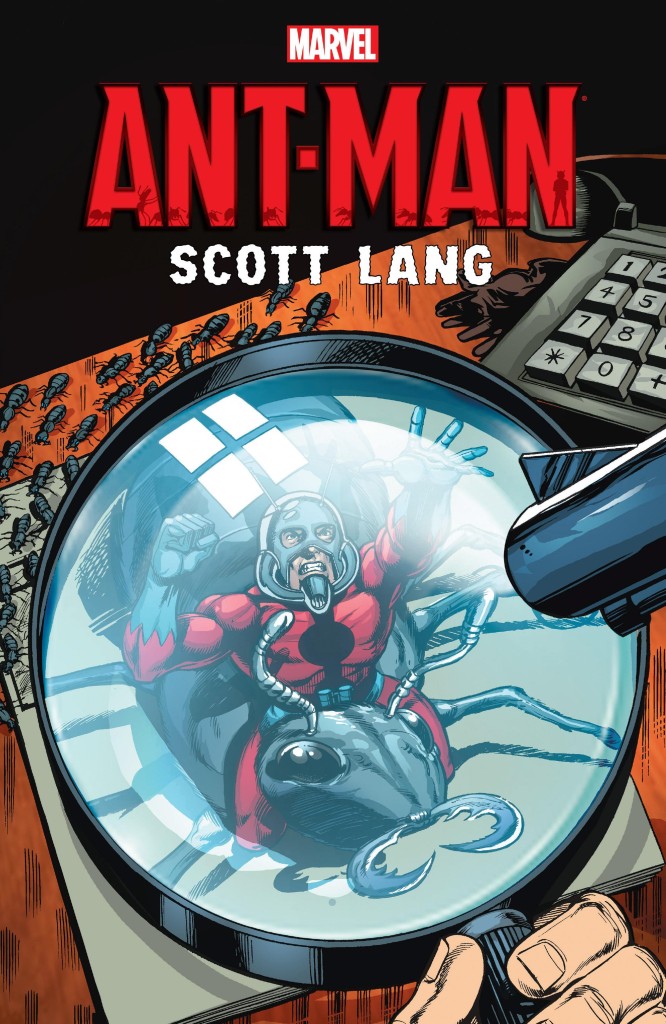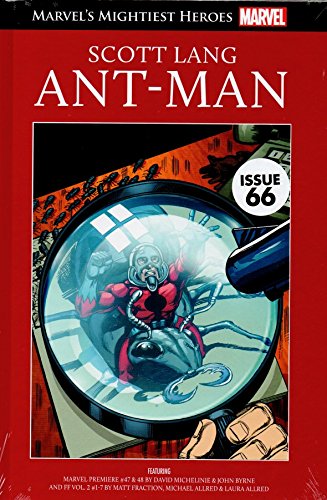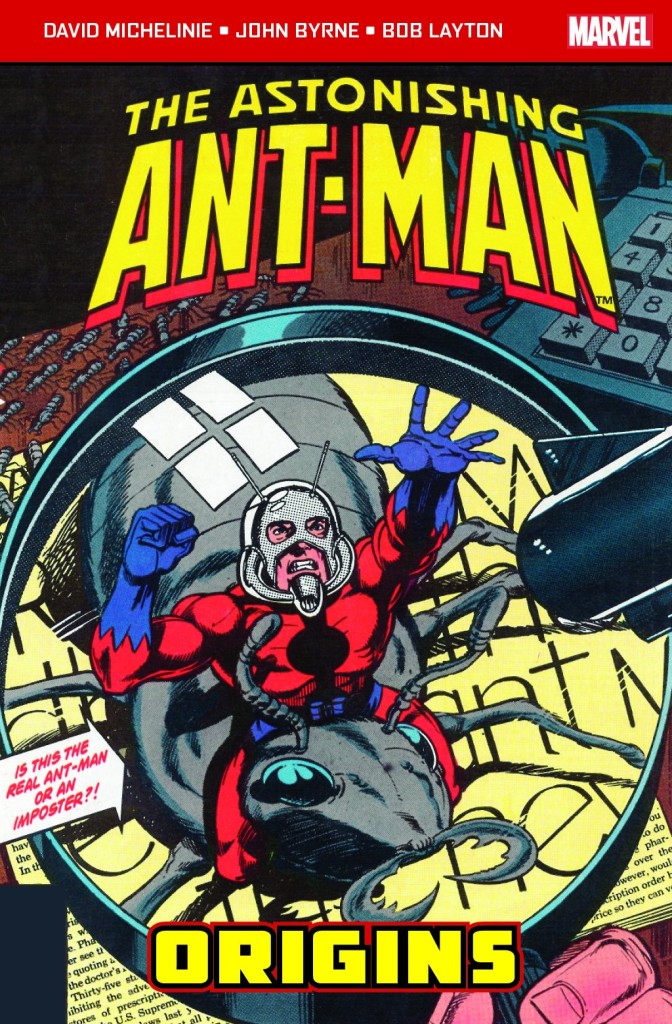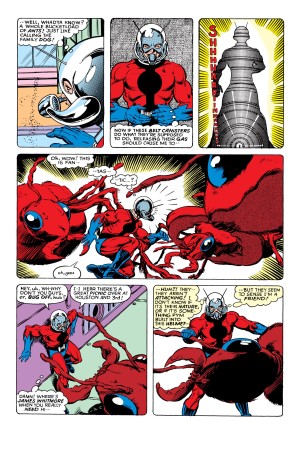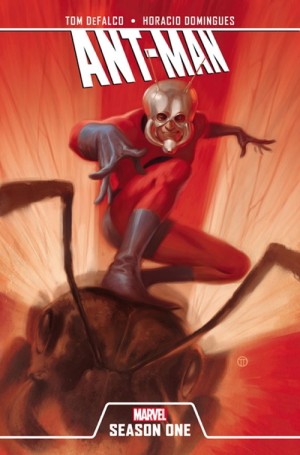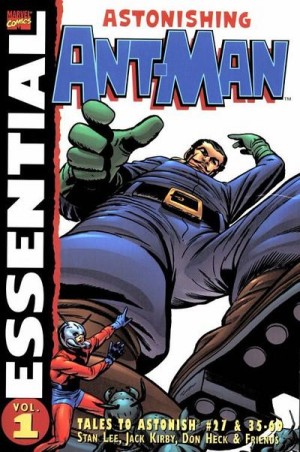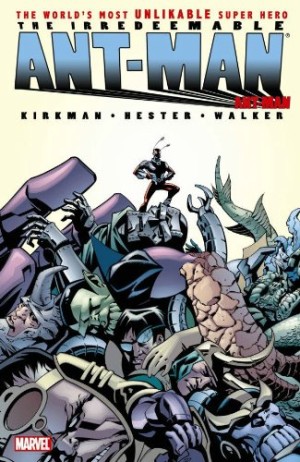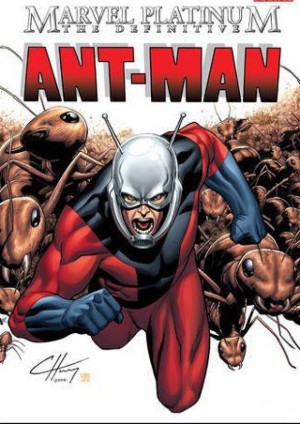Review by Frank Plowright
There was some surprise firstly that an Ant-Man movie was made at all, and then among those familiar with the character’s history and various identities that it was the Scott Lang version to appear on cinema screens. It worked, however, because Lang was specifically created back in 1981 with an interesting backstory. The marketing problem was that Marvel didn’t actually produce that many stories about Lang as Ant-Man, and beyond the opening chapters here his appearances were always guest star appearances in other titles.
David Micheline created the new Ant-Man, and writes almost the entire content. Lang’s a fundamentally decent guy, but also desperate and short of money to provide a life-saving operation for his young daughter. Although a qualified technical engineer he’s served a jail term for burglary and gone straight, but housebreaking is again the answer to his problems. Instead of money, though, he discovers Hank Pym’s old Ant-Man costume. That this work originated in 1979 means it’s plagued by exposition, excess verbiage and characters stating the obvious, but David Michelinie’s plot clips along at a fair pace, propelled by some dynamic draughtsmanship from the art team of John Byrne and Bob Layton (featured). There’s a convenience in Hank Pym being more than lenient when it comes to permitting Lang to keep the stolen technology, but better addressed in that manner than by an extended fight sequence.
Having introduced the new Ant-Man, Michelinie, with Layton now co-writing, establish him alongside Iron Man, Lang having a civilian job as part of Tony Stark’s security team. It leads to an encounter with the Hulk, mindless variety, as three scientists pool their knowledge to cure Bruce Banner of his affliction. Art by John Romita Jr in his early 1980s style still looks fine, and while over-written the plot stands up well by supplying then new ideas. It’s the best on offer.
Michelinie next writes Ant-Man into the Avengers, but this is more standard material, although nicely illustrated by George Pérez at his early Marvel peak. That story introduces the Taskmaster as a villain, someone who’d prove to have a more sustained and interesting career than Lang. Both return alongside Spider-Man with Micheline now scripting for Jerry Bingham, but this is very ordinary. More interesting is Luke McDonnell illustrating Ant-Man working within a protected computer system in what was disguised as an issue of Iron Man.
On the face of it Tom DeFalco’s mission to rescue the Thing from a microscopic universe is an ideal setting for Ant-Man, but it’s very ordinary and just too convenient that Ant-Man is also able to control the indigenous insect life. The finale has Michelinie and Greg LaRocque teaming Lang with Hawkeye at the circus, where a now familiar villain shows up. Again, it’s ordinary.
The collection closes with a page explaining Ant-Man’s abilities and shrunken reproductions of four original art pages. Beyond 1982 there wasn’t much life for Scott Lang at Marvel. Only Michelinie had a real interest in him, and when he left to work elsewhere Lang languished in obscurity for the best part of a decade. What followed then was a brief stint with the Avengers prefacing an ignominious late 1990s demise and later revival in Avengers: The Children’s Crusade.
All bar the final two stories here, neither anything to write home about, are also available in Ant-Man: Origins, the UK pocket sized collection. It’s cheaper and contains all the better content. Alternatively in Britain there’s Hachette’s hardcover spotlight on Ant-Man featuring the Michelinie and Byrne tale along with Lang’s 21st century Fantastic Four membership.
